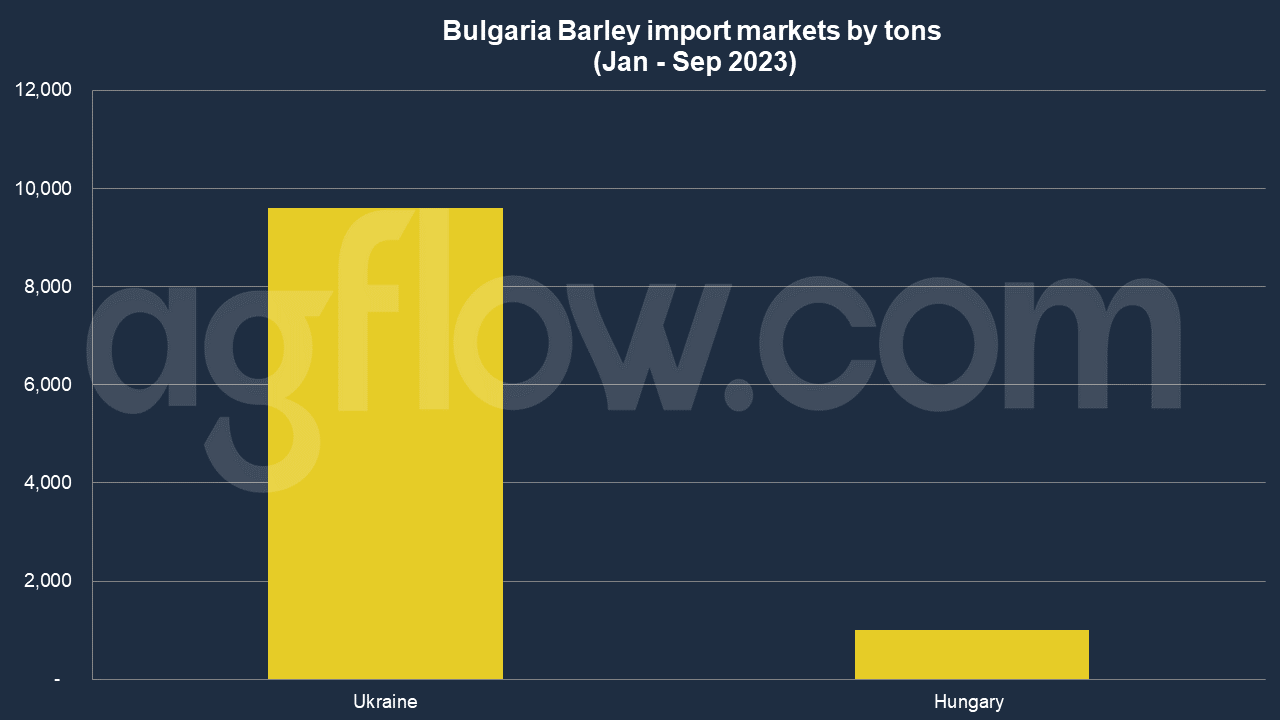Summer Barley Cultivation Is Falling in Austria
Talk to our team about AgFlow's offering →
Reading time: 2 minutes
Austria is celebrated for its picturesque landscapes, rich history, and sophisticated cultural contributions. But what’s often overlooked in the cacophony of travel brochures and music festivals is the country’s agricultural backbone. Among the verdant fields of this European jewel, barley stands out as a significant player in Austria’s agricultural commodity scene. But why has 2023 seen such notable changes in Austria’s barley trade and imports?
Why Barley, and Why Austria?
Firstly, it’s essential to grasp the significance of barley in Austria. Why does this particular grain merit attention? In simple terms, barley serves multiple purposes in Austria, from food production, especially in making traditional dishes, to serving as a foundational ingredient in brewing – Austria’s celebrated beverage industry. Hence, the relationship between Austria and barley isn’t just one of commerce but of culture and tradition.
A Balancing Act: Austria’s Trade-offs in 2023
From January to August 2023, Austria’s barley trade witnessed a fascinating dance between domestic demands, international market fluctuations, and climatic changes. Here’s where the intricacies come into play:
Austria had to balance its internal barley demands against the benefits and pitfalls of importing. On the one hand, importing could cater to the immediate demands, especially with unpredictable weather patterns leading to inconsistent yields. Conversely, excessive reliance on imports could undermine the local barley farming community. How does one balance these competing demands? The trade-offs are clear: either ensure short-term supply consistency at the potential long-term detriment of local farmers or prioritize local production with the risk of immediate supply chain interruptions.
Summer barley cultivation in Austria is declining. In Austria, summer barley is produced on roughly 60,000 hectares, whereas winter barley is produced on an area of some 85,000 hectares. Winter barley is chiefly used as animal feed and, compared to summer barley, produces larger yields and is richer in protein. Summer barley is primarily used for brewing purposes. The key quality attribute of malting barley is its low protein level, which reaches no more than between 9.5 and 11.5%.
According to AgFlow data, Austria imported 11,000 tons of Feed Barley from Romania in Jan – Sep 2023.
Challenges on the Horizon
The international market in 2023 hasn’t been static either. Several global players have ramped up their barley production, leading to competitive pricing that made imports tempting for Austria. But isn’t there always a catch? Importing might address immediate supply concerns, but what about quality assurance and the nuances of barley varieties that local dishes and breweries demand?
Moreover, consider this rhetorical question: How does Austria maintain its brand of high-quality barley-based products if its origin shifts unpredictably? Here, the analogy of a chef’s signature dish comes to mind. A master chef sources specific ingredients from known suppliers to maintain consistency. In the same vein, Austria’s barley industry thrives on predictability and quality, two factors potentially at risk with erratic importing patterns.
Conclusion: A Road Ahead Defined by Choices
In 2023, the narrative of Austria’s barley trade and imports isn’t just a tale of numbers and tariffs; it’s a story of culture, choice, and commerce interwoven intricately. As professionals in the agricultural commodity industry and even as consumers, understanding these nuances provides a richer appreciation of this sector’s challenges and decisions.
In the end, Austria’s barley narrative reminds us that every trade, every import, and every market fluctuation isn’t just an economic decision—it’s a choice that shapes culture, tradition, and the very fabric of society.

In Conclusion: Navigating the Barley Trade Waters
Bulgaria’s barley trade and imports in 2023 offer a compelling study in balancing act and adaptation. While the country grapples with the trade-offs of different cultivation techniques, its position in the global barley market remains robust. For professionals in the agricultural commodity industry and casual observers alike, Bulgaria’s barley story is a testament to the intricate weave of global trade, domestic demand, and sustainable practices. Watching Bulgaria navigate these waters promises to be an enriching experience as we move forward.
Try AgFlow Free
Access Free On Updates for Corn, Wheat, Soybean,
Barley, and Sunflower Oil.
No Credit Card Required & Unlimited Access In Time

